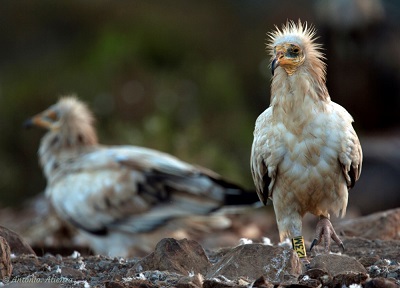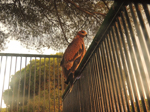The Egyptian vulture is a long-lived territorial bird, threatened worldwide. A study led by the CSIC has made it possible to understand the natal dispersal in this species, that is, the movement made by birds from the place of birth and the first place of reproduction, which allows to clarify some questions about their behavior. The study has been carried out in collaboration with more than ten research institutes, universities, public administrations and several dozen volunteers and environmental agents.
"This work has required a great effort, due to the difficulty and complexity of maintaining such long-term studies. If it weren't for the perseverance and dedication of many researchers, this type of information would not have been possible to obtain", explains José Antonio Donázar, researcher at the Doñana Biological Station (EBD-CSIC)
The study is based on the information generated by several long-term marking and monitoring programs of six Egyptian vulture populations between France and Spain. Between 1986 and 2015, we marked 1613 fledglings in six study areas. At the regional scale, the researchers had data on natal dispersal of 124 vultures (66 males and 58 females) that breeded for the first time at ages 3 to 24 years.
"We have taken into account effects associated with each population such as breeding population density and population trends, as well as individual traits such sex, age, and the conditions experienced during the rearing stage, the hierarchy rank within the brood and the age of first breeding", adds David Serrano, also a researcher at the EBD-CSIC.
The results showed that the median dispersal distance was 48 km, although some birds moved more than 500 km to settle as breeders. An interesting finding was that dispersal distances were inversely related to vulture density in the natal population, particularly in males, suggesting that birds perceive the abundance of conspecifics as a signal of habitat quality.
David Serrano also points out that "curiously, the shortest dispersal distances occurred in areas of high density but where the species was in decline due to adult mortality." Egyptian vultures are territorial, so losses due to poison, infrastructure and other causes allow new birds to find a place to recruit near the place of birth. However, birds seem to perceive deteriorating habitat conditions and they tend to escape from declining populations by moving further to find a place to breed for the first time.
As the EBD-CSIC researcher continues to explain, another important finding is that females moved on average almost three times further than males. Both sexes followed different dispersal tactics depending on the social context and, especially the females, interactively with their individual traits. This is something that they did not fully understand and that opens up new questions.
"The work demonstrates the difficulty of obtaining valuable information to shed light on factors that may be interacting in a complex way in natal dispersal, a very little known trait in long-lived territorial birds, which can be a determining factor in the trend viability of the populations", points out Ainara Cortés-Avizanda, postdoctoral researcher associated with GEDA, from IMEDEA UIB-CSIC. This researcher adds that "the results allow us to better understand the dispersal dynamics of this bird and the causes of its decline in previous high density contexts, which apparently continue to be suitable for Egyptian vulture".
Serrano et al. 2021. Phenotypic and environmental correlates of natal dispersal in a long-lived territorial vulture. Scientific Reports. https://doi.org/10.1038/s41598-021-84811-8
https://doi.org/10.1038/s41598-021-84811-8


 A study led by the CSIC finds that the Egyptian vulture selects the areas with the highest density of individuals to reproduce for the first time
A study led by the CSIC finds that the Egyptian vulture selects the areas with the highest density of individuals to reproduce for the first time
